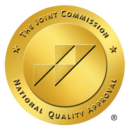Managing drug comedowns involves caring for your body and mind as substances wear off. Stay hydrated, eat nourishing meals, and allow plenty of time for rest. Practicing mindfulness or gentle movement like stretching can ease emotional discomfort. Avoid stimulants or other substances, as they can worsen symptoms.
Surround yourself with supportive people or calming environments. If comedowns are frequent or severe, consider seeking professional help—your well-being matters, and recovery is always within reach. You’re not alone.
 What Is a Comedown?
What Is a Comedown?
A comedown is the period of physical and emotional discomfort that follows the use of illicit stimulants or psychoactive drugs such as MDMA, cocaine, or amphetamines. As the effects of the drug wear off, the body and mind begin to crash, often resulting in fatigue, irritability, or low mood. Unlike withdrawal, which involves dependency and prolonged symptoms, a comedown is usually short-term and tied to a single episode of substance use.
During a comedown, individuals may feel anxious, depressed, or mentally foggy. The brain’s depleted neurotransmitters—like dopamine and serotonin—can leave users feeling emotionally drained. Some people also experience physical symptoms such as headaches, dehydration, or difficulty sleeping.
Managing a comedown involves gentle self-care, like staying hydrated, resting, and avoiding further substance use. Supportive environments and calm activities can ease the transition. If comedowns become frequent or severe, they may signal a deeper issue that could benefit from professional attention.
What Causes a Comedown From a High?
A comedown from a high is primarily caused by the way certain substances affect brain chemistry, particularly those that flood the brain with feel-good chemicals like dopamine, serotonin, and norepinephrine. Stimulants such as cocaine, MDMA, or amphetamines overstimulate these neurotransmitters, leading to intense euphoria. However, once the drug wears off, the sudden drop in these chemicals leaves the brain chemically imbalanced, resulting in fatigue, low mood, or irritability.
The body also contributes to comedowns. After the overstimulation caused by the drug, the body enters a recovery mode, often marked by dehydration, exhaustion, and disrupted sleep cycles. Physically, individuals may experience headaches, muscle aches, or a general sense of depletion as the body tries to restore equilibrium.
Psychological factors play a role as well. Feelings of guilt, anxiety, or disappointment can surface once the initial high is gone. The contrast between the elevated state and return to baseline can intensify emotional distress.
What Does a Comedown Feel Like?
A comedown can feel like a sharp emotional and physical crash after the effects of a drug wear off. What may have started as a euphoric or energizing high often gives way to fatigue, irritability, and sadness. This contrast in mood can feel jarring, especially for first-time users or those unprepared for the shift.
Mentally, individuals may experience brain fog, anxiety, or hopelessness as dopamine and serotonin levels drop. The absence of the drug’s influence can leave someone feeling empty or emotionally raw. For some, intrusive thoughts or emotional sensitivity might surface, making it difficult to concentrate or relax.
Physically, the body may feel drained or achy, with symptoms like dehydration, headaches, insomnia, or nausea. The comedown experience varies from person to person, depending on the drug used and individual health. Still, it often feels like the body and mind are in a recovery mode, trying to regain balance and stability.

Withdrawal Symptoms and Managing a Comedown
While withdrawal results from chronic substance use and involves the body readjusting, a comedown often follows a single episode, especially with stimulants or psychedelics. Though both can bring discomfort, ranging from nausea and mood swings to low energy and irritability, the strategies for easing symptoms overlap in helpful ways.
Support recovery with these techniques:
Sip fluids throughout the day to stay refreshed and combat fatigue.
Choose meals rich in nutrients—soups, grains, or fresh produce.
Quiet rest helps reset both your body and nervous system.
A short walk or stretch can release tension and stabilize mood.
When things feel too heavy, a conversation can lighten the load.
How to Comedown From a High?
A comedown can feel like an emotional crash, often marked by irritability, fatigue, and a sense of emotional flatness. This isn’t just in your head—your body and brain are actively recalibrating after a sudden neurochemical shift. It’s the body’s natural attempt to regain equilibrium after being overstimulated. Accepting this state, rather than resisting it, can ease the transition and support healing.
Easing the Comedown: A Grounding Guide
- Find a quiet, dimly lit place where you feel emotionally safe
- Silence notifications, avoid screens, and remove distractions
- Use soft music, calming scents, or a blanket for comfort
- Sip water, herbal teas, or electrolyte drinks slowly and often
- Choose easy, nourishing foods like bananas, toast, or soup
- Avoid caffeine, sugar, or heavy meals that may upset your system
- Let your body rest—naps, quiet reflection, or stillness are all valid
- Breathe deeply; short grounding practices can reset your mood
- Be kind to yourself—this phase is temporary and part of healing
Recovery takes time—be patient with yourself. Your well-being matters.
What Helps a Comedown?
Coming down is a vulnerable time. The key is to avoid fighting the process—support it instead. Hydration and nutrition build physical resilience, while a calming environment helps lower sensory input.
Pairing physical care with emotional support is equally important. Mindfulness exercises like deep breathing or meditation can ground your emotions, while talking with someone you trust may ease feelings of anxiety or low mood. Remember: comedowns are temporary. Being kind to yourself during the process helps support a smoother recovery and reinforces healthy habits.

Comedown Support Strategies
A thoughtful approach can make a big difference during the comedown phase. These strategies combine physical care, emotional grounding, and simple environmental adjustments to help ease discomfort and promote recovery.
| Strategy | Why It Helps |
|---|---|
| Replenish with fluids | Hydration supports drug detox and helps clear physical and mental fog. |
| Eat grounding meals | Balanced foods stabilize blood sugar and can elevate mood. |
| Rest without pressure | Gentle rest allows for emotional processing and physical repair. |
| Use sensory anchors | Calming inputs like music, scent, or texture soothe the nervous system. |
| Limit overstimulation | Reducing noise and light can prevent agitation and emotional spikes |
| Reach out if needed | Talking to someone trusted makes the experience feel less isolating. |
Remember: discomfort doesn’t mean you’re broken—it means you’re recalibrating.
Treatment Options for a Smooth Landing
Treatment options for a smooth landing emphasize stabilization, comfort, and long-term success. The first stage often involves medically supervised detox to manage withdrawal safely and alleviate discomfort. Once physical symptoms subside, clients typically transition into residential programs or outpatient programs. These provide structured support while allowing for varying levels of independence. Core addiction therapy services include Cognitive Behavioral Therapy (CBT), Dialectical Behavior Therapy (DBT), and trauma-informed approaches that address the root causes of addiction.
Additional options enhance the recovery experience and promote long-term healing:
- Medication-Assisted Treatment (MAT): Combines FDA-approved medications with behavioral therapy for opioid, alcohol, or nicotine dependence.
- Holistic therapies: Yoga, acupuncture, nutrition counseling, and mindfulness practices support physical and emotional balance.
- Dual diagnosis treatment: For those with co-occurring mental health conditions, integrated care is essential.
- Aftercare planning: Ongoing therapy, sober living, and peer support groups help maintain recovery momentum.
A smooth landing means more than detox—it’s a full-circle journey back to health.
How to Cope With a Comedown
A comedown can feel overwhelming, but gentle care helps ease the transition. Rehydrate, rest, and eat nourishing foods to support balance. Avoid additional substances or stressful situations. A calm space with low light, soothing music, and limited stimulation encourages emotional stability and promotes a smoother recovery process.
Equally important are emotional and psychological supports. Reaching out to a trusted friend or support group can provide grounding. Journaling or light movement, such as walking or yoga, can help process lingering emotions. If symptoms persist or worsen, seeking professional guidance may be necessary to prevent relapse or emotional escalation.
| Strategy | Description |
|---|---|
| Hydration and Nutrition | Replenish essential fluids and nutrients for recovery |
| Rest and Sleep | Allow the body to reset and restore natural rhythms |
| Environment Control | Reduce sensory overload with quiet, comfort-focused settings |
| Emotional Support | Talk to someone or engage in reflective practices like journaling |
| Professional Help | If symptoms persist, consult a counselor or medical provider |
Get Drug Addiction Help at Discovery Institute in Marlboro, NJ
Located in Marlboro, New Jersey, Discovery Institute offers personalized, evidence-based treatment for individuals ready to reclaim their lives from addiction. Our addiction treatment programs span from medically supervised detox to residential and outpatient care, all rooted in compassion and clinical excellence. Whether you’re seeking support for yourself or a loved one, we provide a safe, structured path toward healing.
Our multidisciplinary team includes licensed therapists, addiction counselors, nurses, and medical professionals—united by a commitment to treat the whole person. We take a trauma-informed, dual diagnosis approach that recognizes the interplay between substance use and mental health. With individual attention and ongoing support, we help clients build the tools for sustained recovery.
Our Services Include:
- Medically supervised detox and withdrawal management
- Individual, group, and family therapy
- Dual diagnosis treatment for co-occurring disorders
- Holistic care: nutrition, mindfulness, and exercise
- Comprehensive aftercare and relapse prevention
Contact us today to speak with our admissions team. Your journey to lasting recovery begins with a single, supported step.
 What Is a Comedown?
What Is a Comedown?


